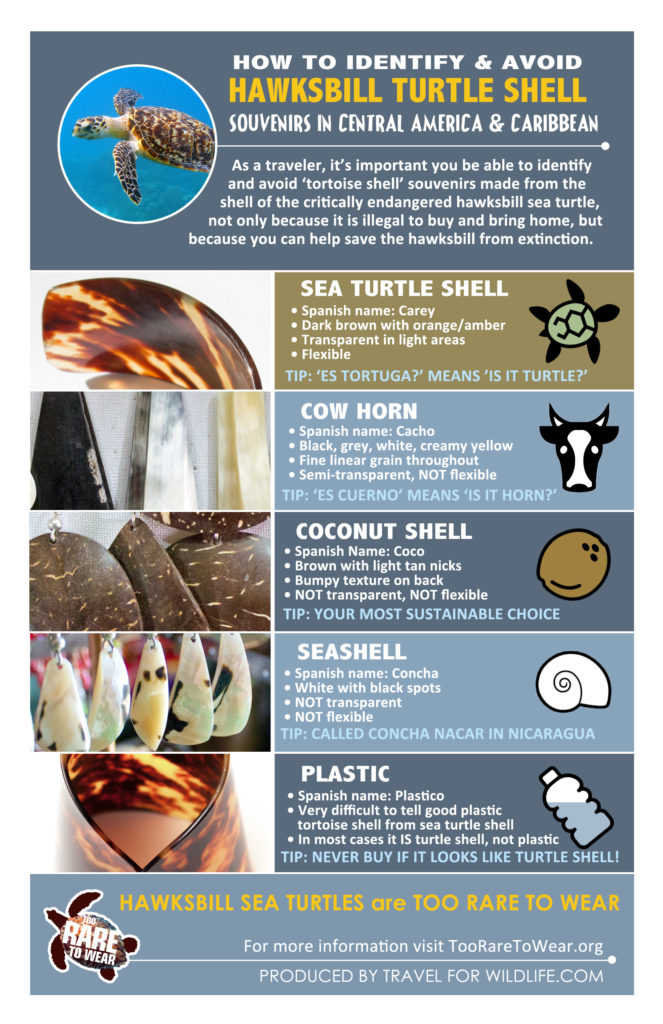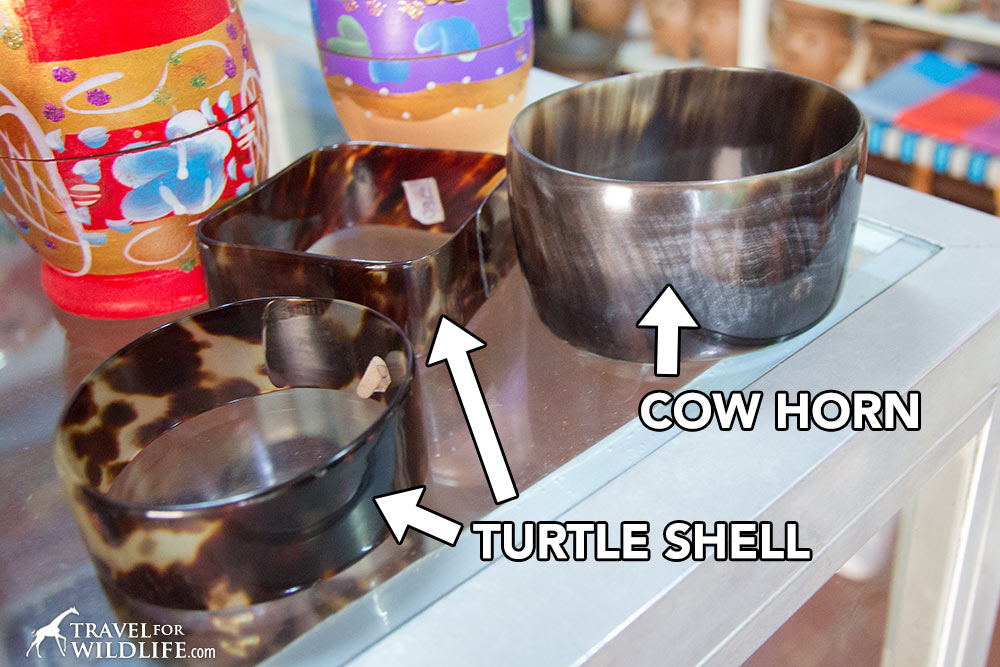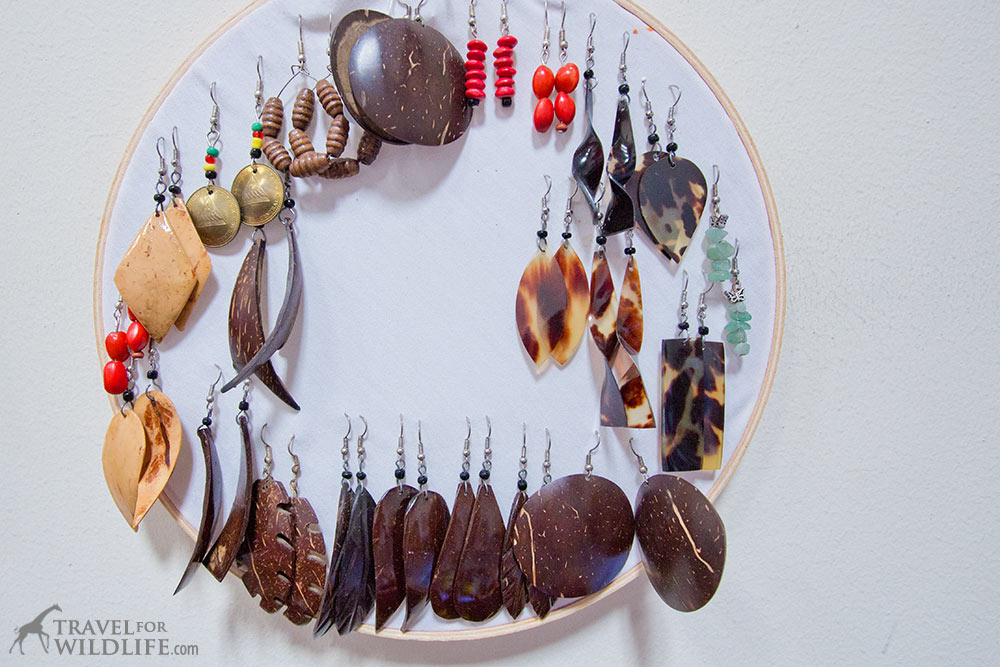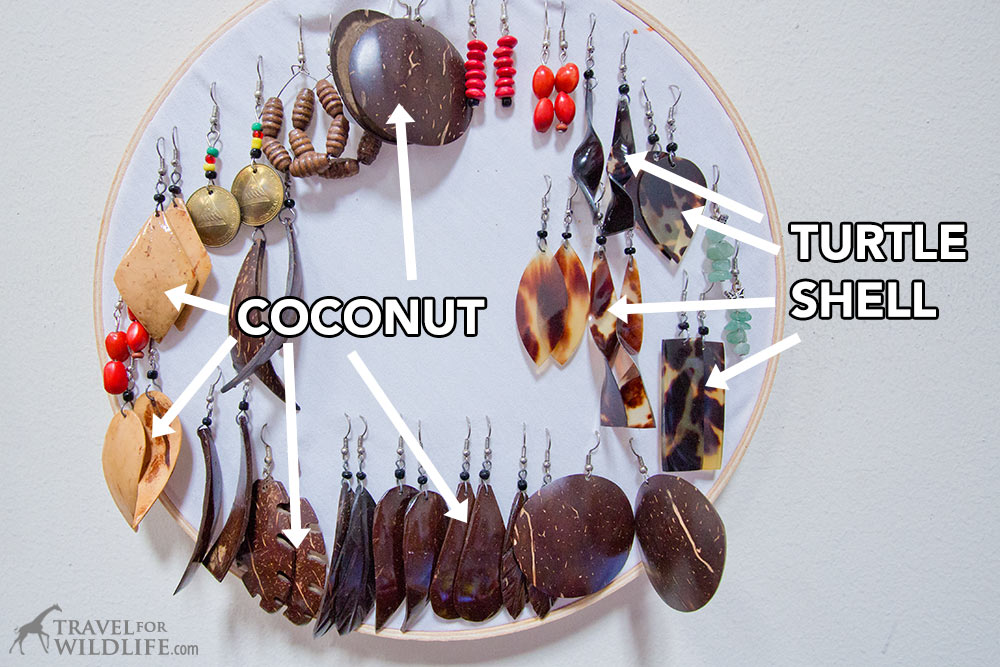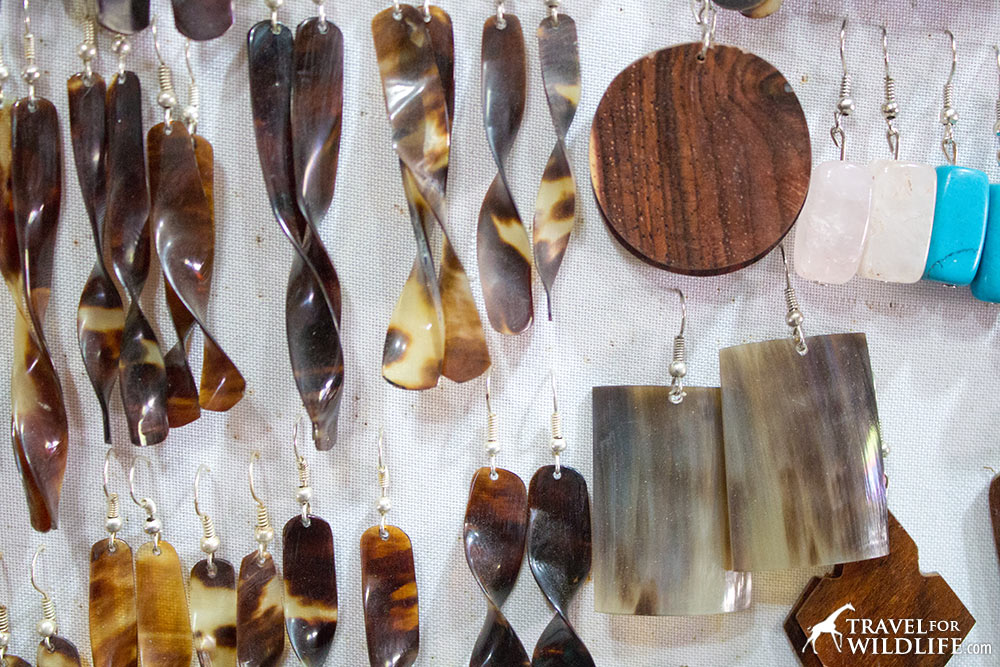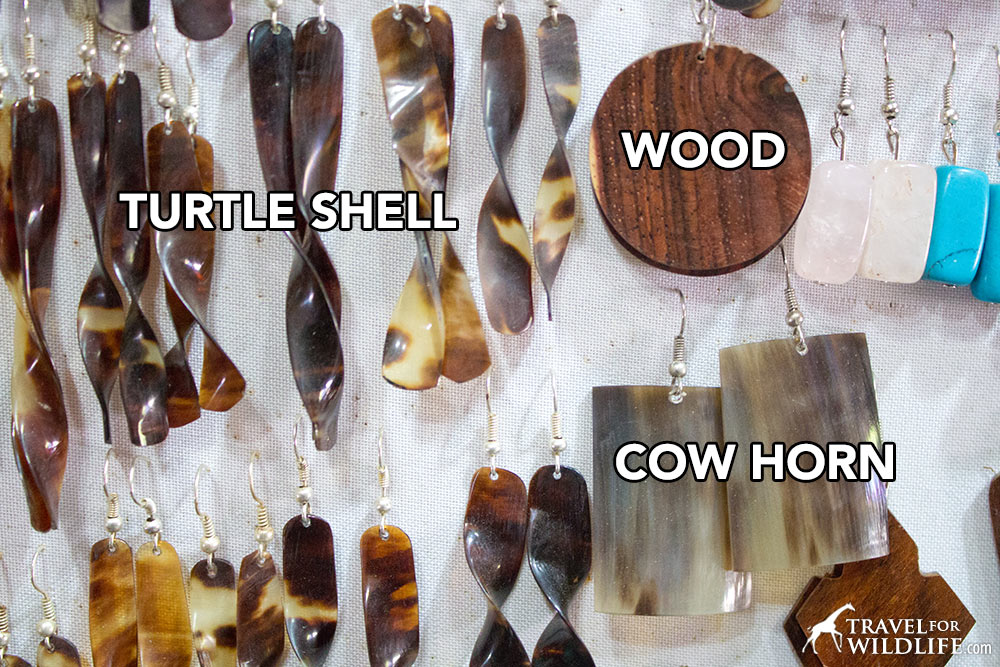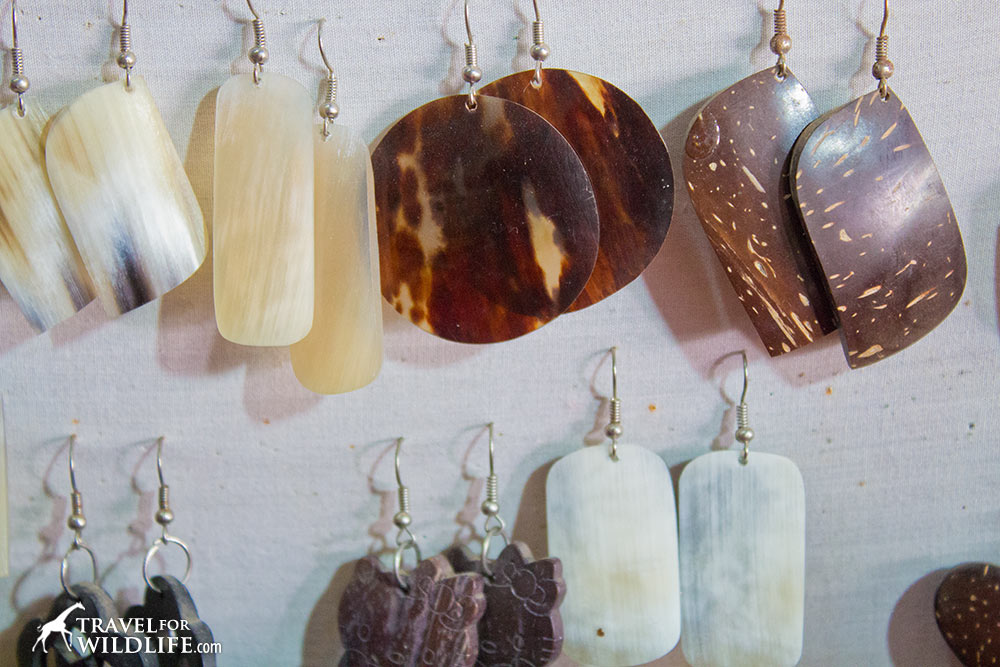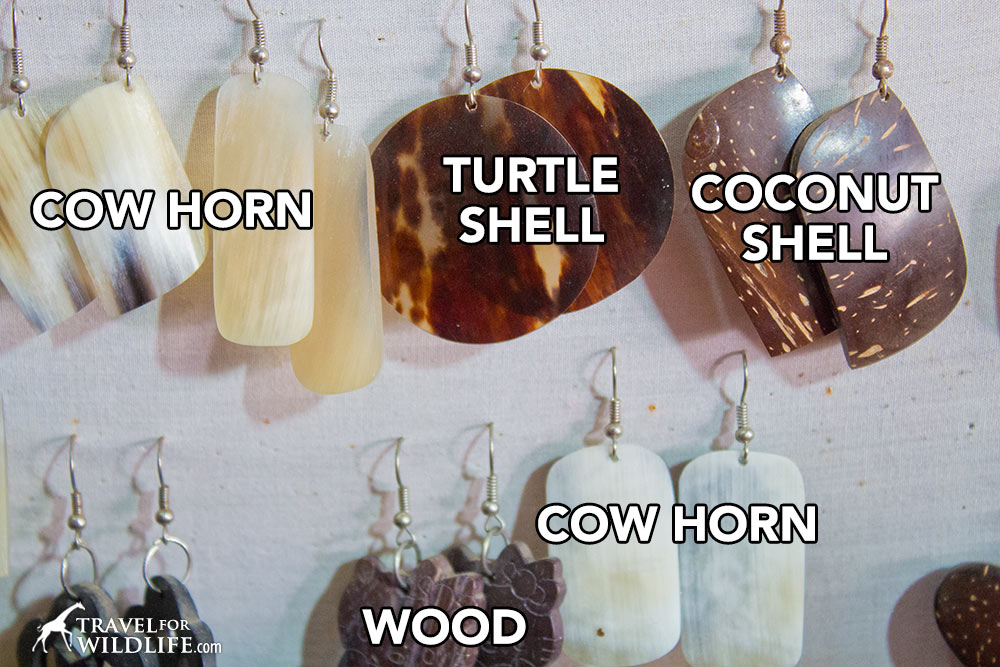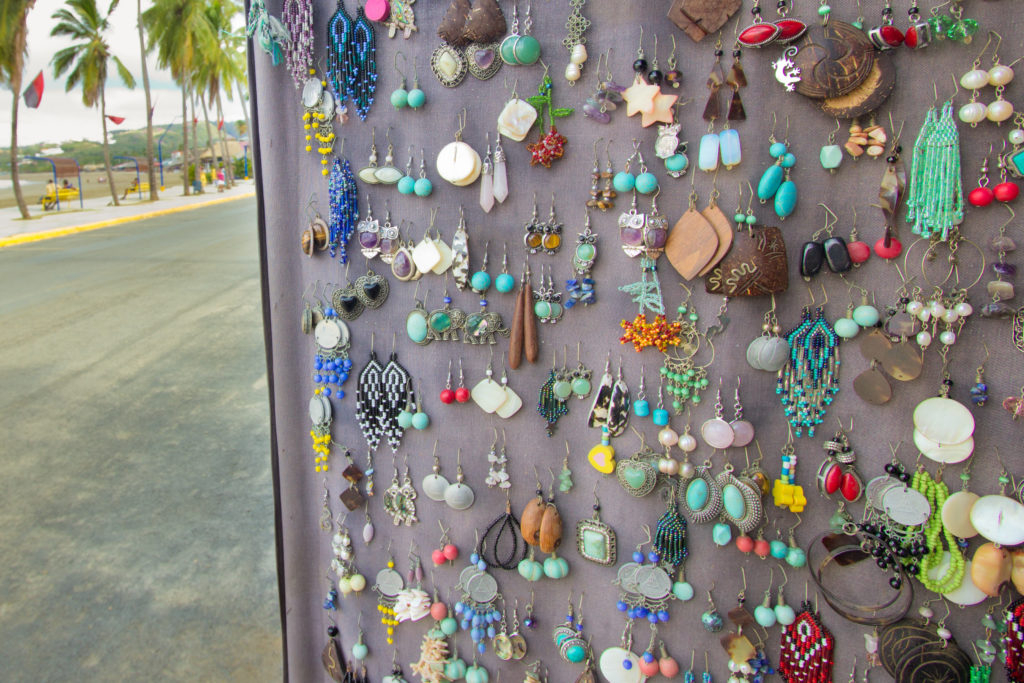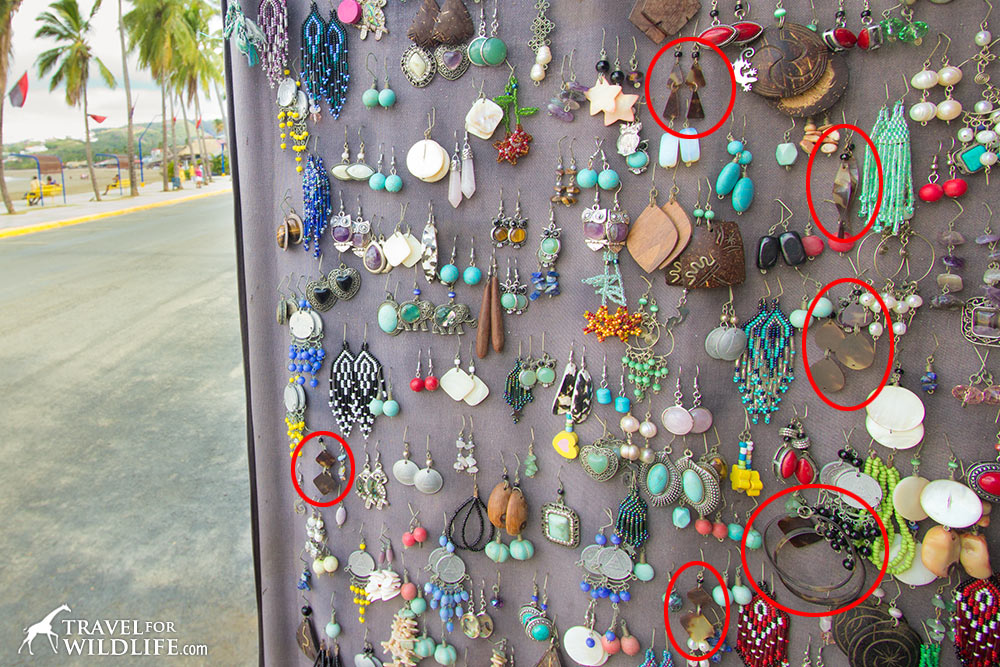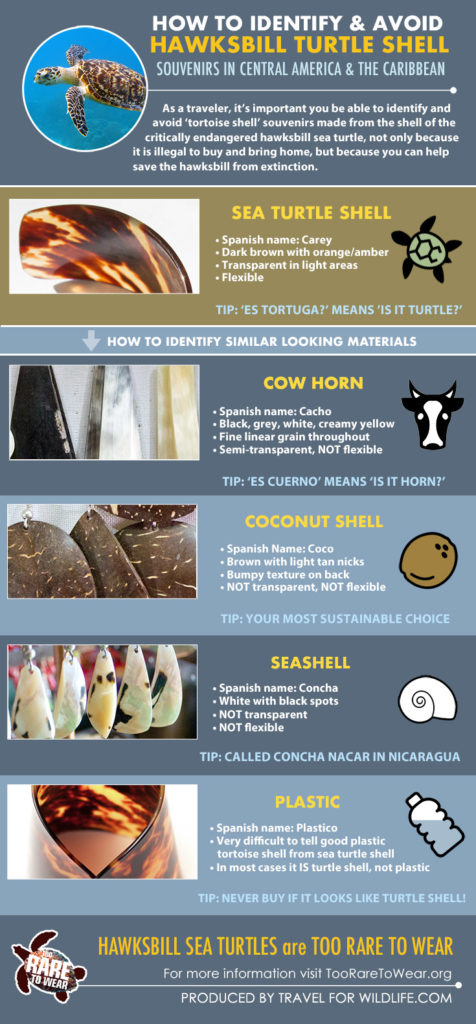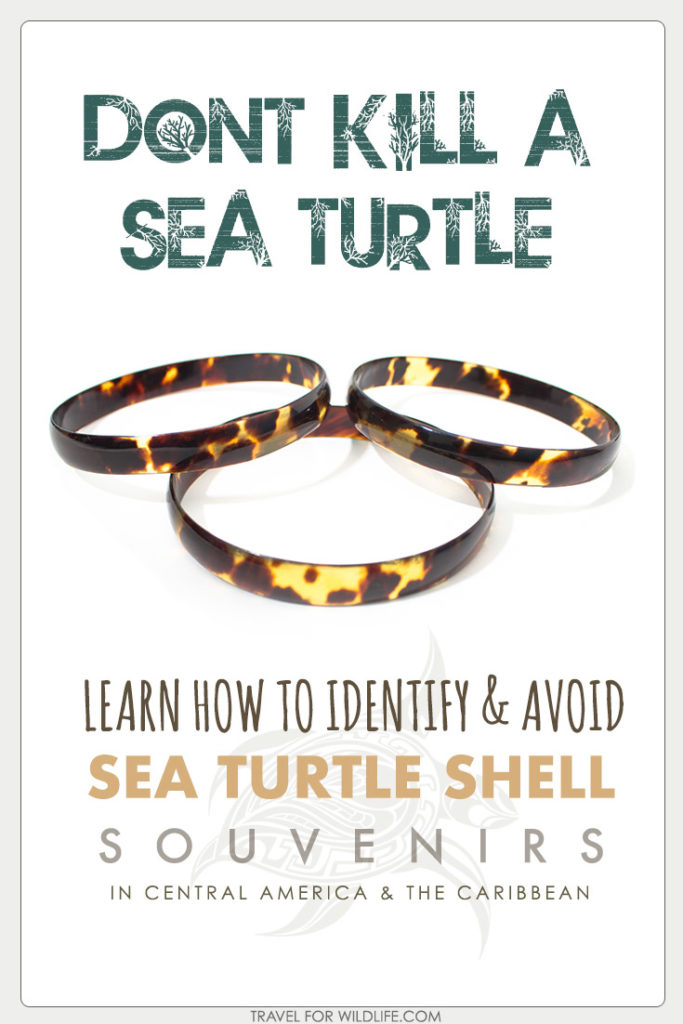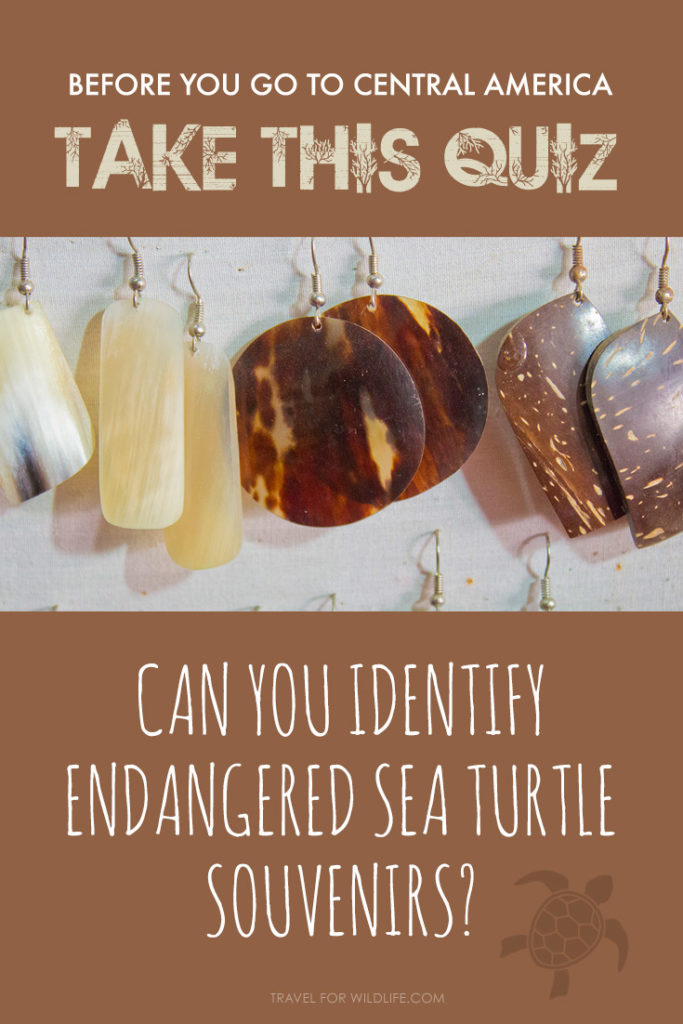If you don’t have time to read the whole article, just do these three things.
1) Watch the video.
If you’re traveling to Central America or the Caribbean, watch this video first. You could save a sea turtle’s life.
2) Download this info-graphic.
Either save it on your phone or print it and take it with you so you can recognize and avoid turtleshell souvenirs when you’re traveling. You can download the pdf version or download the jpg (or just click the image below to view full size, then right-click and choose “save image as”). [Note: This graphic contains copyrighted content and is intended for personal use only. It cannot be reproduced without the consent of all authors.]
This was designed for Central America & Caribbean countries. You can also find a general identification info-graphic on the Too Rare To Wear resources page.
3) Take the quiz.
Think you can recognize sea turtle shell already? Jump to the end and take the quiz!
Why You Shouldn’t Buy Tortoiseshell (Sea Turtle Shell)
Everyone has heard of tortoise shell. It’s that beautiful translucent brown and amber material that’s used to make decorative items from tortoise shell glasses and guitar picks to hair clips and bracelets. What most people don’t know is that “tortoiseshell” is actually made from the shell of the critically endangered Hawksbill sea turtle.
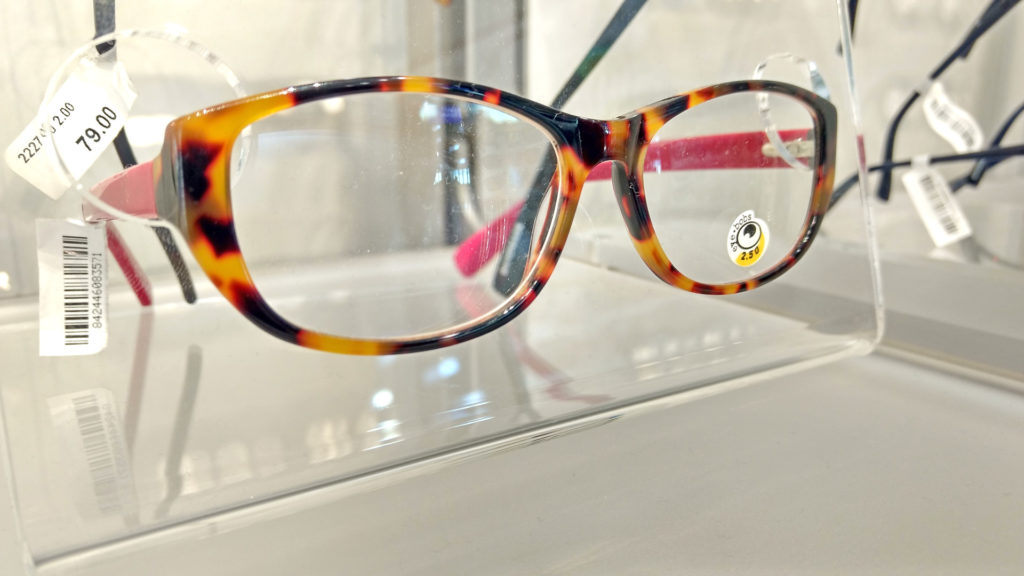
In most countries “tortoiseshell” is now made from plastic. But in Central America and Southeast Asia, many countries still illegally sell tortoiseshell products that are made from the shell of the endangered Hawksbill sea turtle. Nicaragua is the main offender in Central America but there have been reports of hawksbill turtle shell products for sale in tropical countries around the world, including parts of Africa. To see a complete list of countries in Latin America and the Caribbean where you should watch out for endangered turtle shell souvenirs, read the Turtle Shell Report from Too Rare to Wear.
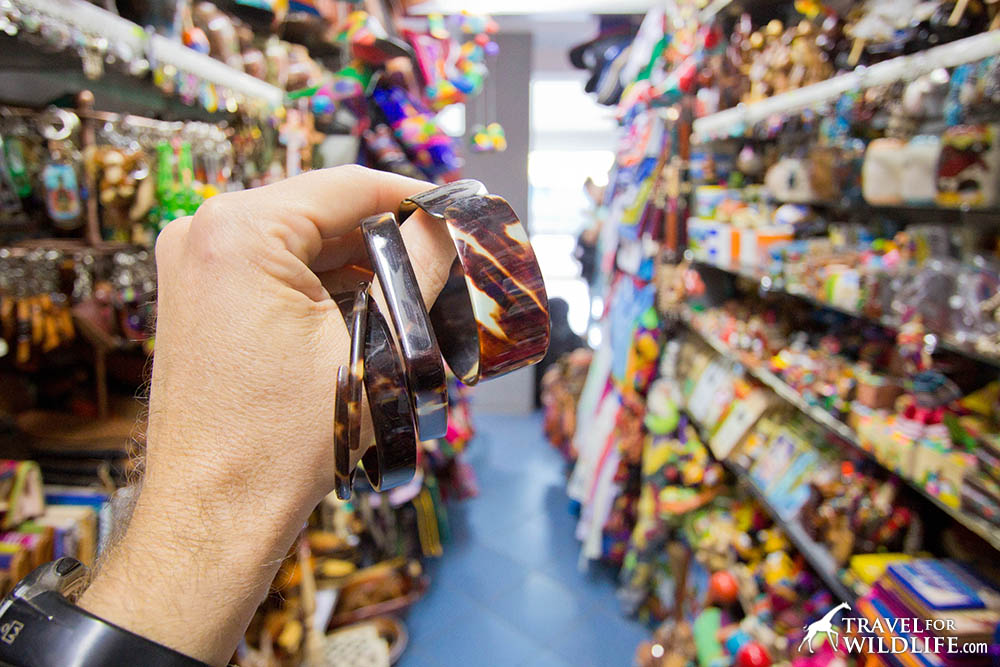
As a traveler, it’s important that you be able to identify and avoid souvenirs made from endangered turtle shell, not only because it is illegal to buy and bring home, but because you can help save the Hawskbill from extinction. Avoid them and you’ll be helping sea turtles.
We were just in Nicaragua shooting for the Too Rare to Wear campaign and we found turtle shell souvenirs for sale in dozens of different shops in four different popular tourist towns so we’ve seen a lot of it up close and we’ve become very good at identifying it. Here’s how to do it.
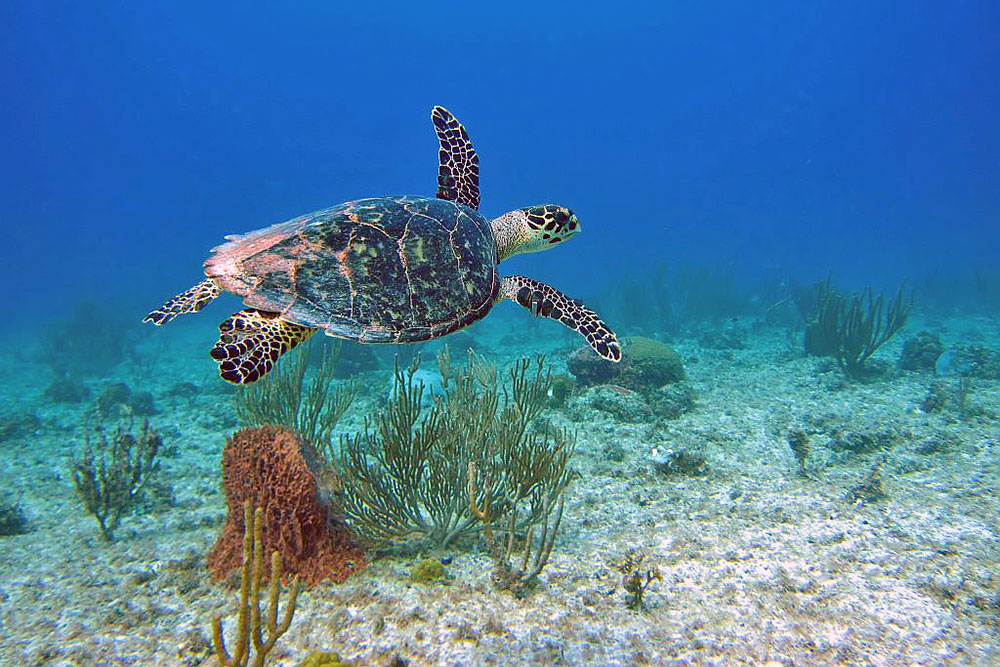
How To Identify Sea Turtle Shell
1) Ask What It’s Made Of
The first and most important thing you can do is ask what it’s made of. The simplest way to say this in Spanish speaking countries is “Que es?” meaning “what is it”?
We found that in 99% of cases, vendors in Nicaragua were honest when asked what a turtle shell product was made of. They all said “Carey”.
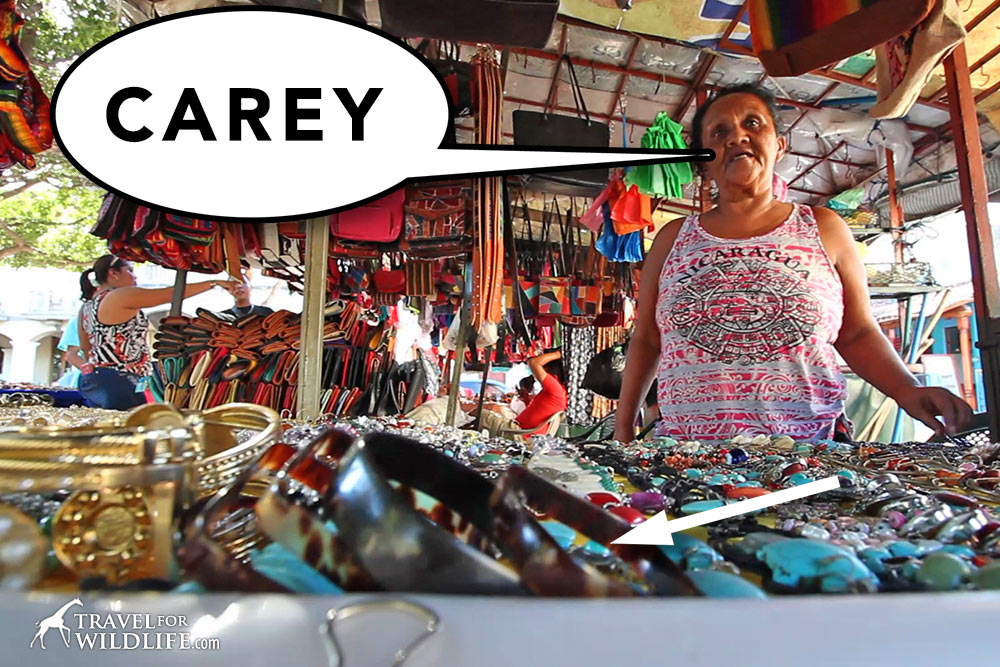
Carey is the Spanish name for the hawksbill sea turtle. (It’s pronounced kah-RAY.) If you want clarification you can say, “Es tortuga?” meaning “Is it turtle?”
While it is illegal to sell sea turtle shell products in Nicaragua (and nearly every other country in the world) the law is rarely enforced and vendors are very open about selling it here. In other countries, like Cuba, vendors may be more cautious about showing their turtle shell products to buyers.
2) Transparent Light Areas
Products made from sea turtle shell usually appear a solid dark brown color when you first see them hanging on a display, but if you hold them up to the light you’ll see that the light-colored areas are transparent and you can see the light through them. These light areas are an orange or amber color.
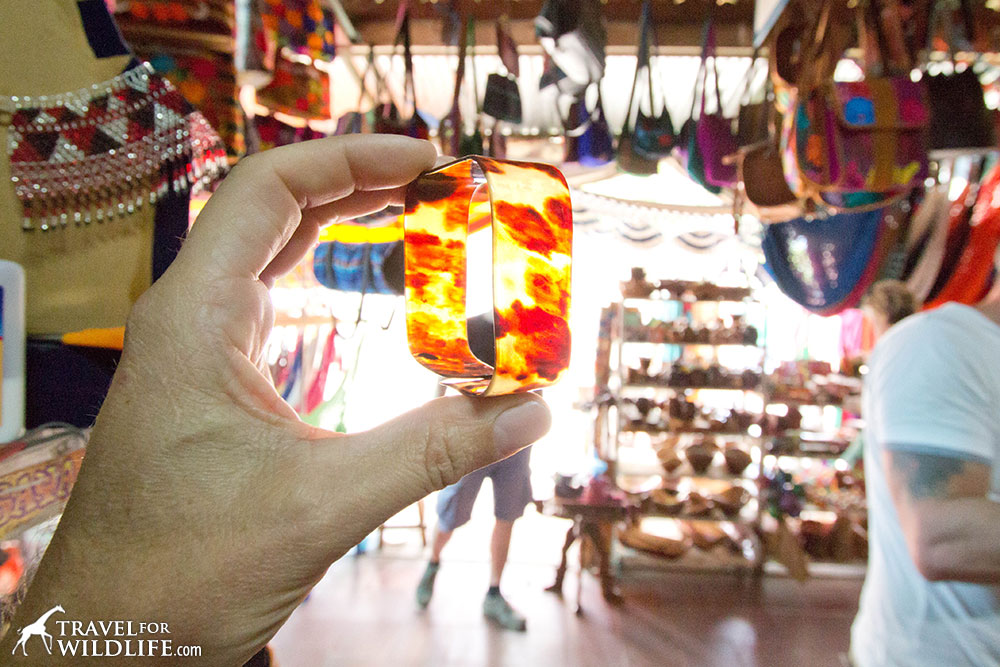
3) Flexible
The next main indicator is that sea turtle shell products are thin and flexible.
Turtle shell can usually bend quite far before breaking, unlike similar looking products made from horn, coconut, or seashell, which are much harder and not at all flexible. (Although you may not be able to flex smaller turtleshell pieces like rings.)
One vendor even told us we could bend a turtle shell bracelet as far as we wanted without breaking it. You can read more about that incident in the plastic section below.
This natural flexibility is one of the main reasons that turtle shell has been such a popular material to use in making decorative items for thousands of years (other than its beauty.) Turtle shell is a natural ‘thermoplastic’. This means that by applying heat it can be bent into new shapes and it will retain that shape, just like modern plastics.
4) Pattern
Hawksbill turtle shell has an irregular streaky or spotty pattern that runs all the way through the material. Here is a gallery of common turtle shell products found in Nicaragua and other parts of Central America so you can become familiar with the pattern as well as recognize common products to watch out for.
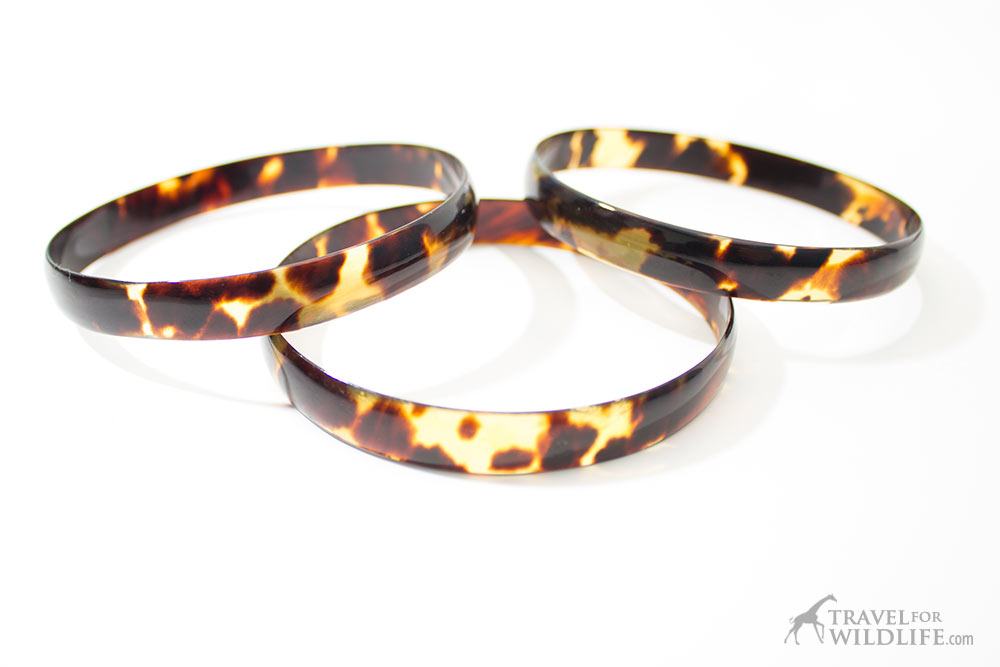
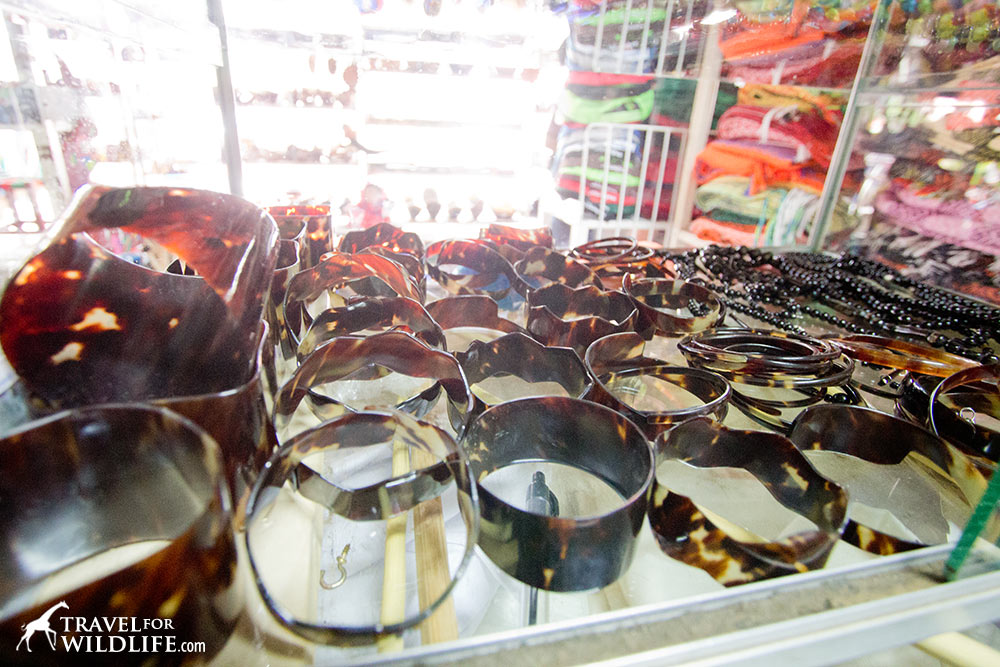
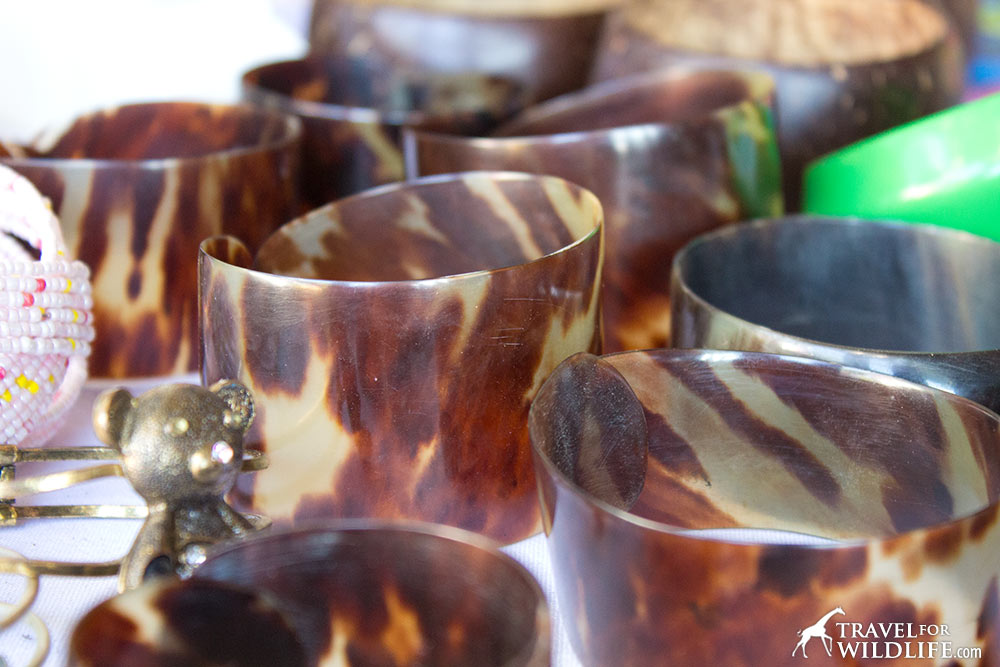
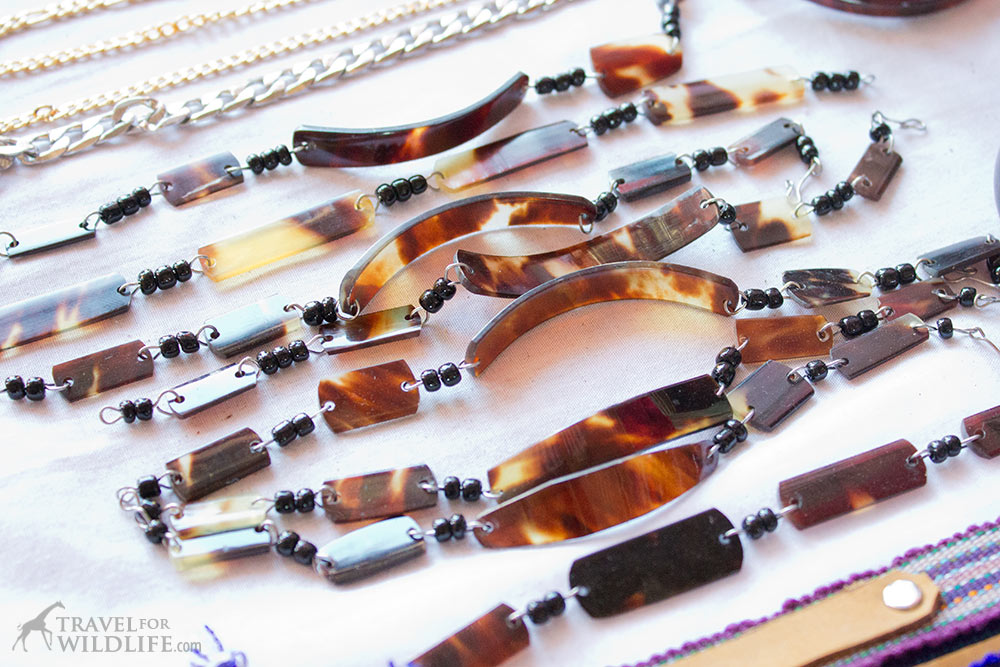
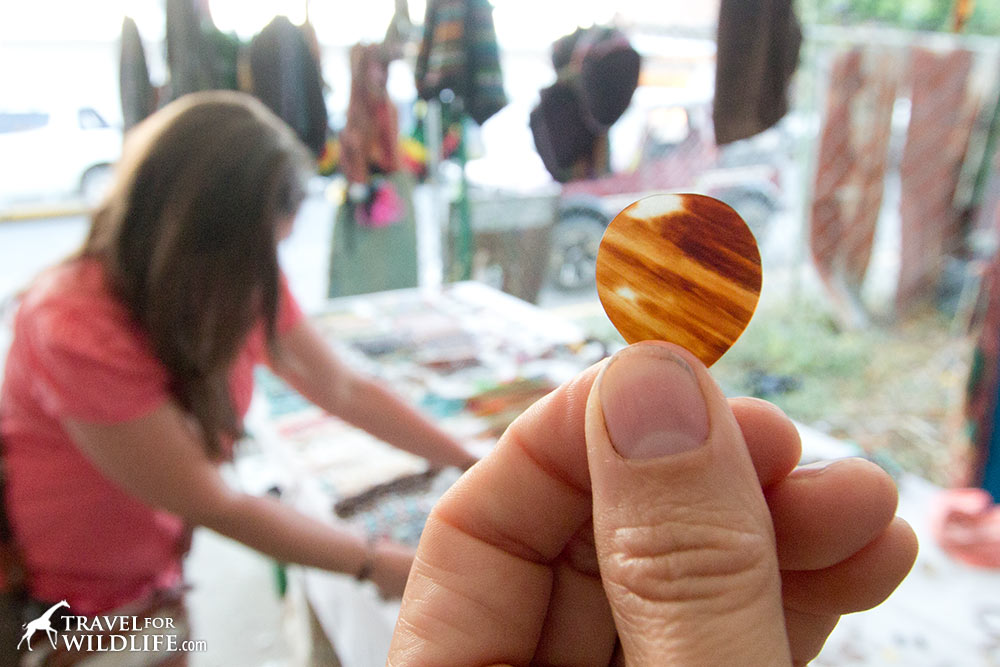
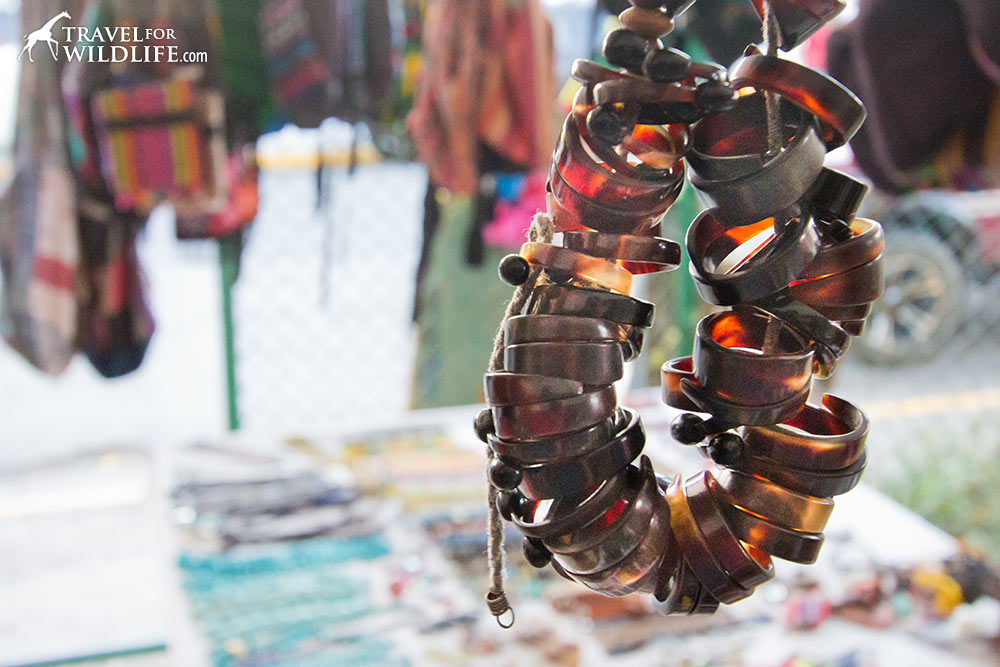
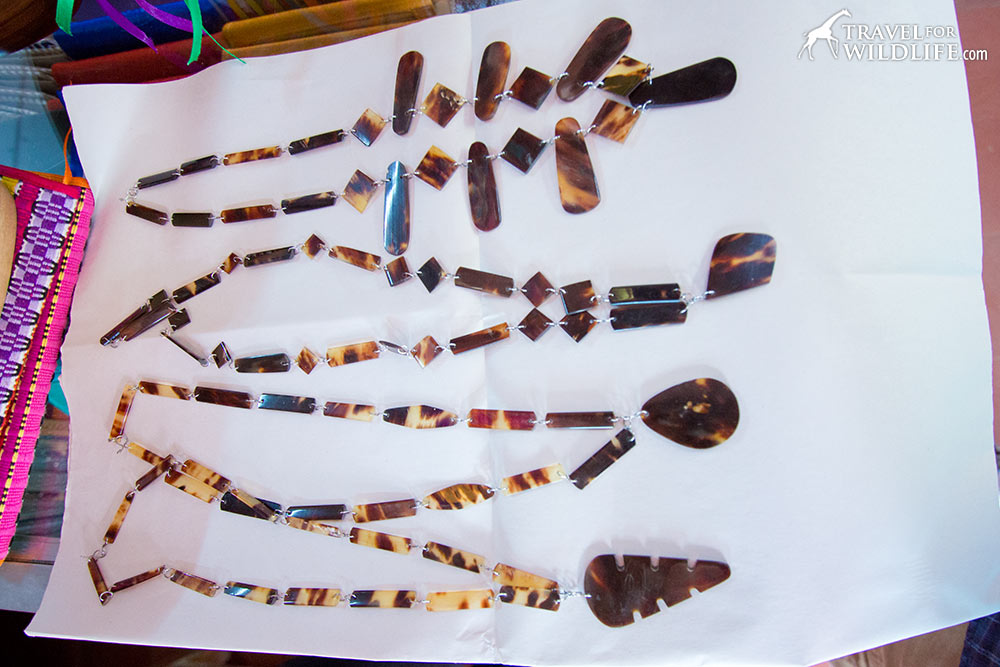
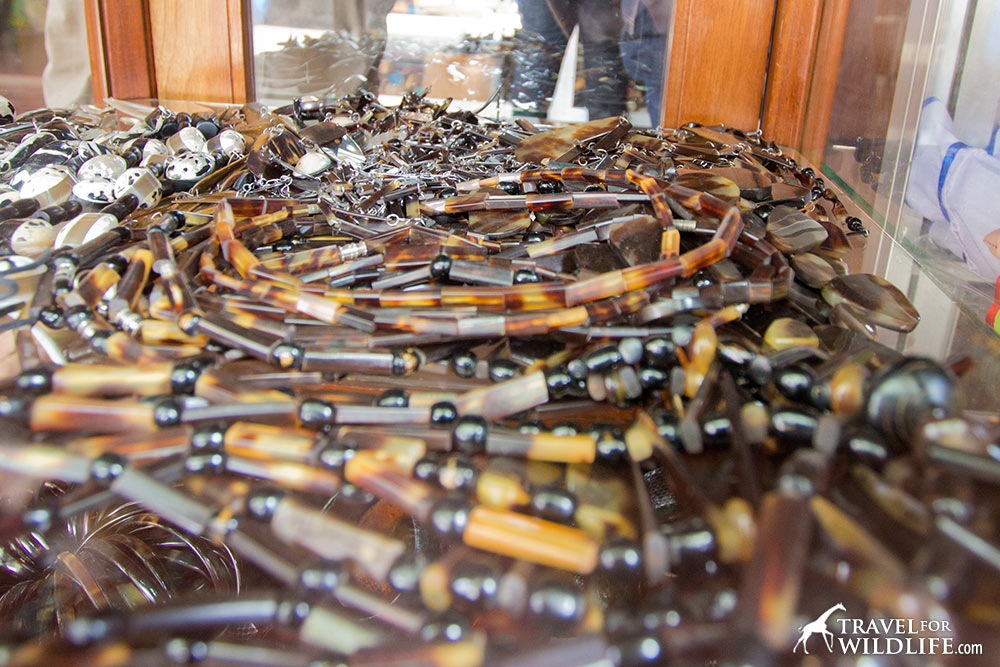
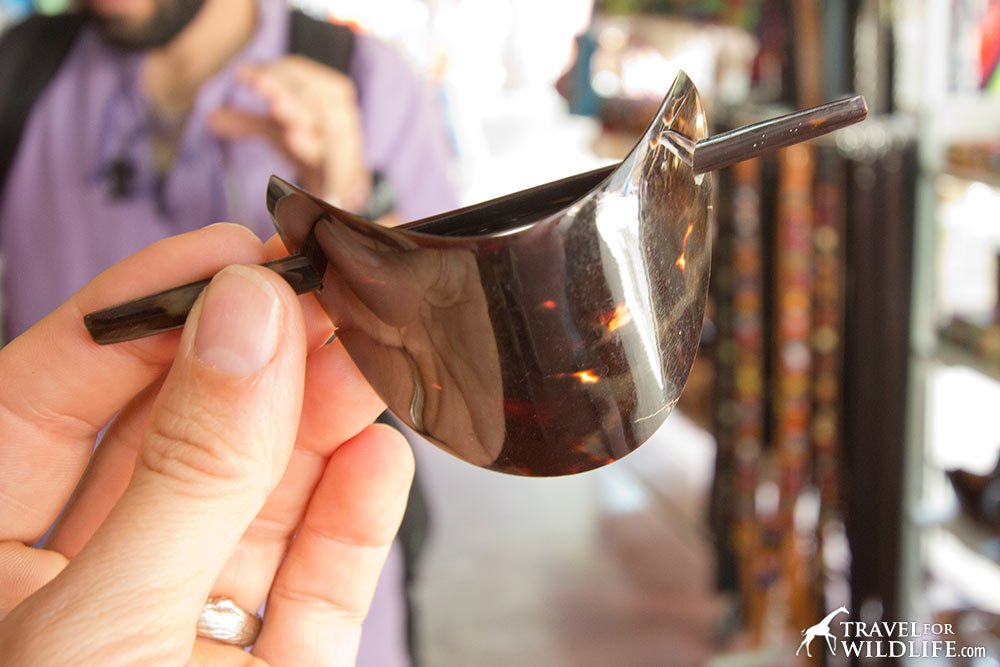
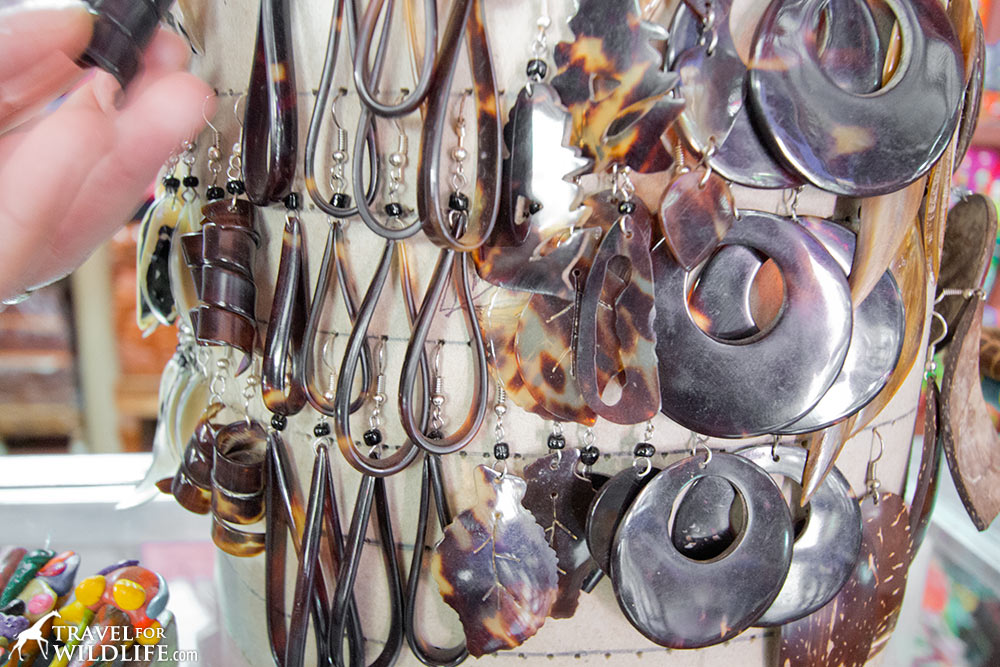
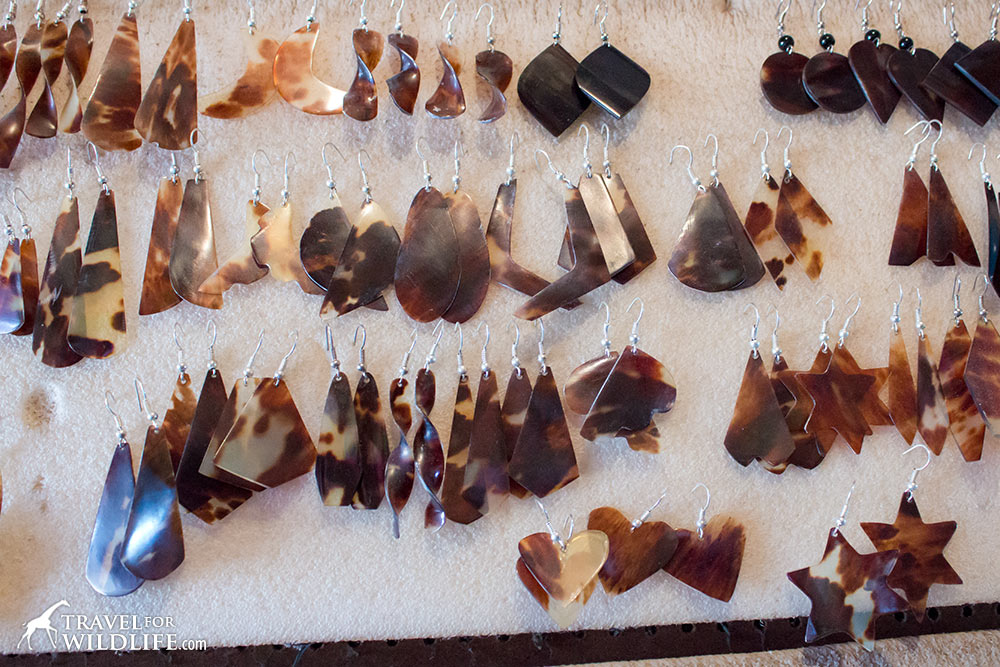
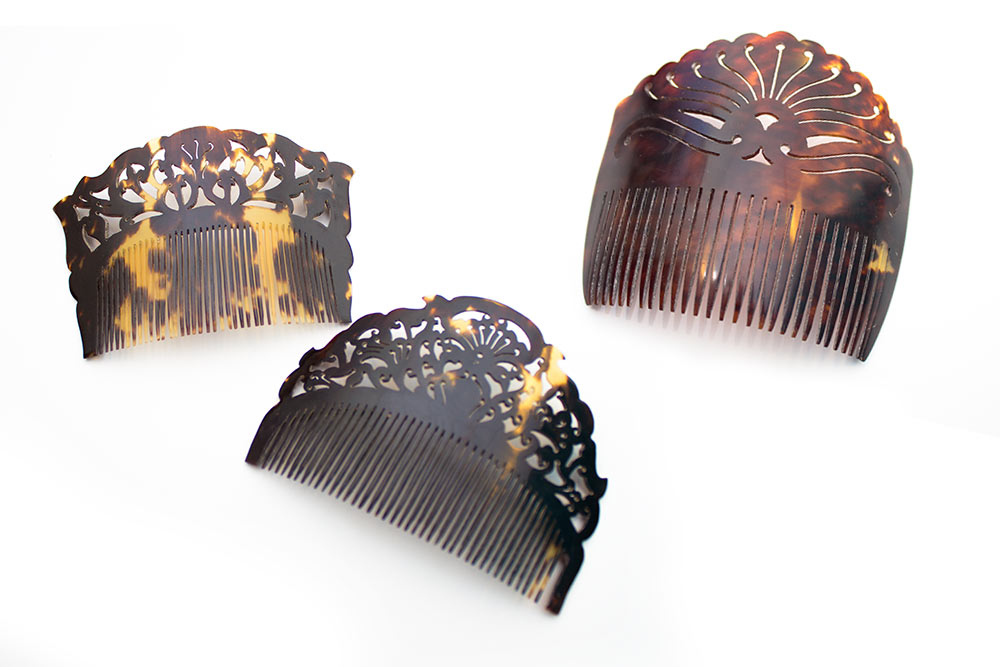
How To Identify Similar Looking Materials (Cow Horn, Coconut Shell, Sea Shell, Plastic)
In some places they may not tell you what it’s made from, so then it’s up to you to learn how to tell the difference between sea turtle products and similar looking items.
1) Cow Horn
In Nicaragua, probably the most similar-looking material to sea turtle shell is cow horn, which is known locally as “cacho“.
If you want to be clear you can ask, “Es cuerno?” which means, “Is it horn?”
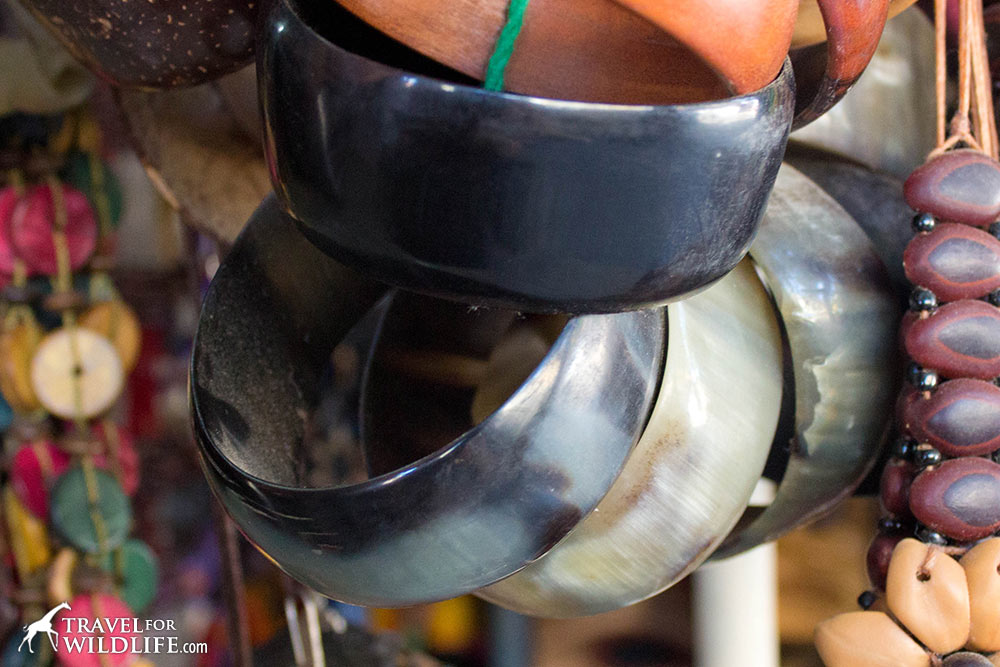
Although cow horn can have a streaky multi-colored pattern like turtle shell and may be somewhat transparent…
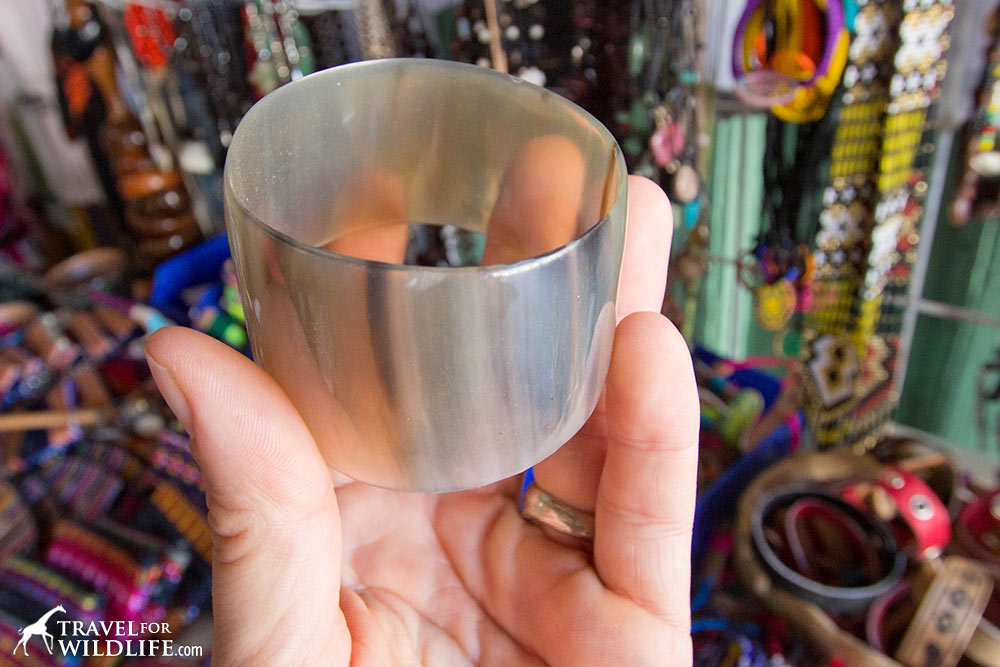
it comes in a different range of colors, usually from black to grey to white and sometimes a creamy yellow.
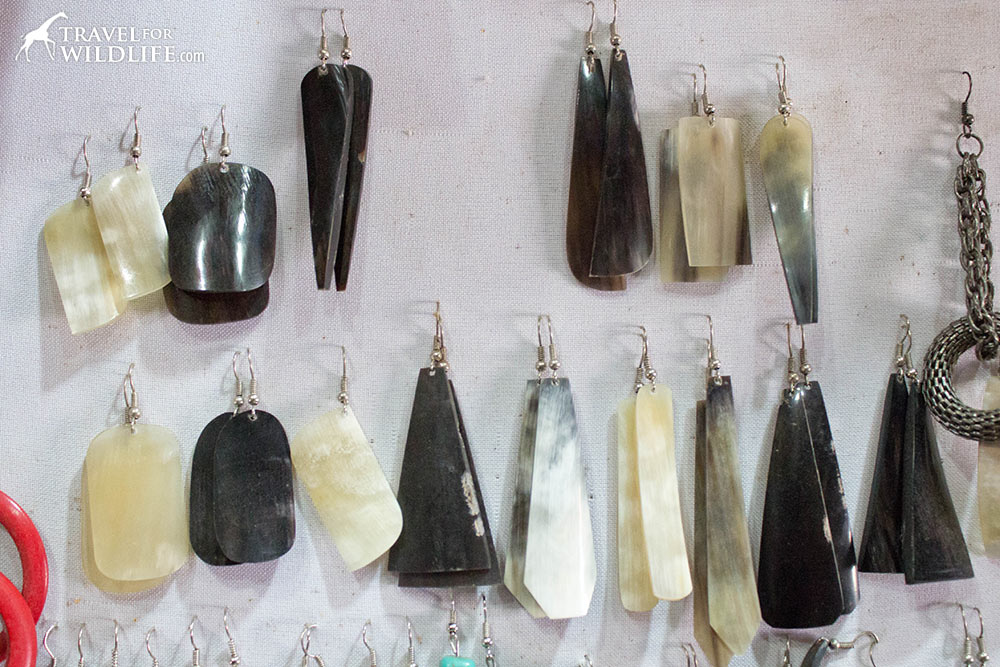
But for me the dead giveaway for cow horn is that it has a fine linear grain that runs all the way through it, like your fingernail, whereas sea turtle shell has no visible grain to it.
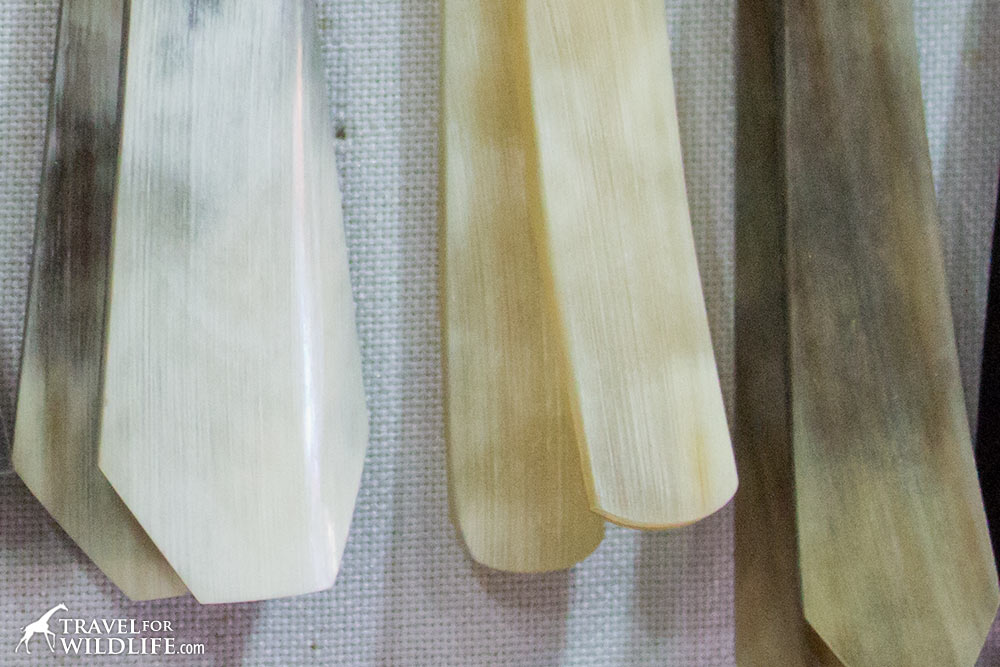
Also, unlike turtle shell, cow horn is not flexible.
The most common cow horn souvenirs we saw in Nicaragua were bracelets and earrings.
2) Coconut Shell
If a vender answers “coco” that means the item is made of coconut shell.
These look similar to turtle shell at first glance because the dark brown tones in coconut shell look a lot like the browns in turtle shell.
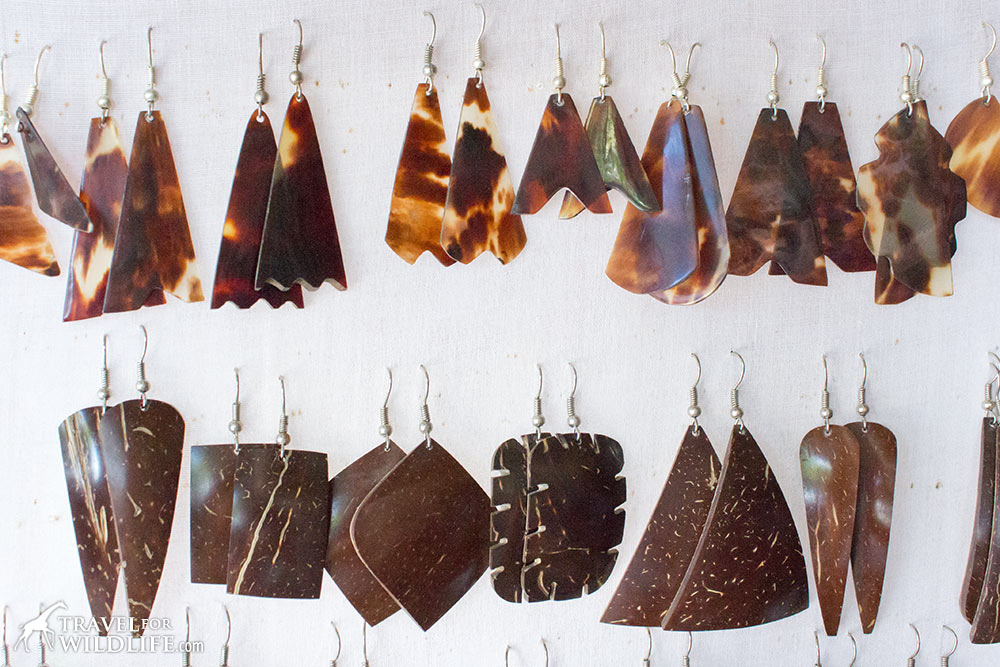
But brown coconut shell jewelry nearly always has small light tan nicks in it, although occasionally it is carved down entirely to the light tan layer with only accents of dark brown.
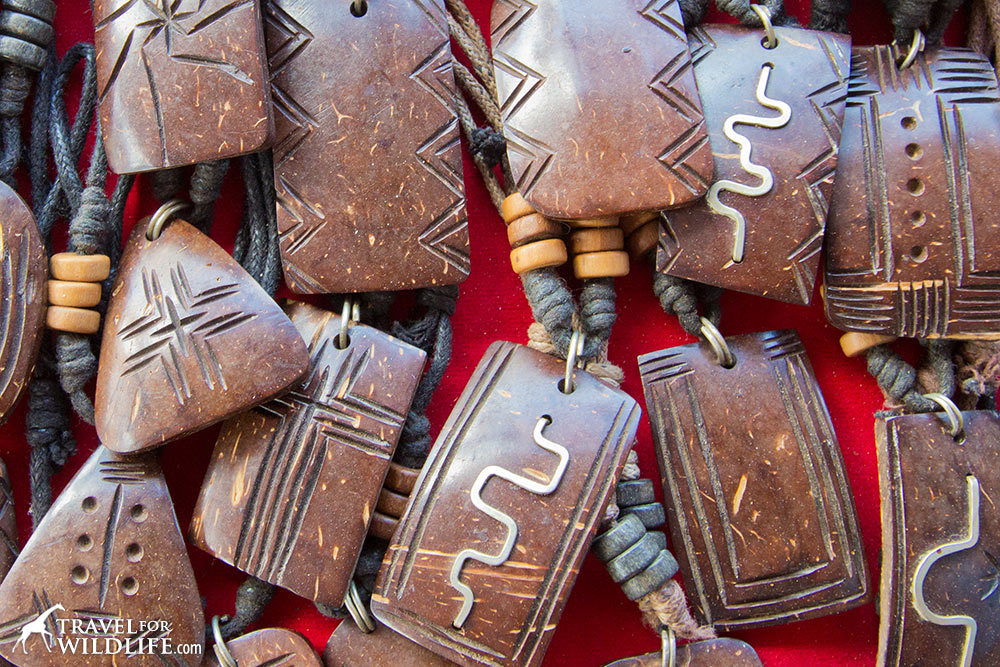
The main giveaway is that coconut shell is never transparent, never flexible, and usually you can see the bumpy grain of the inside of the shell on the back of the piece.
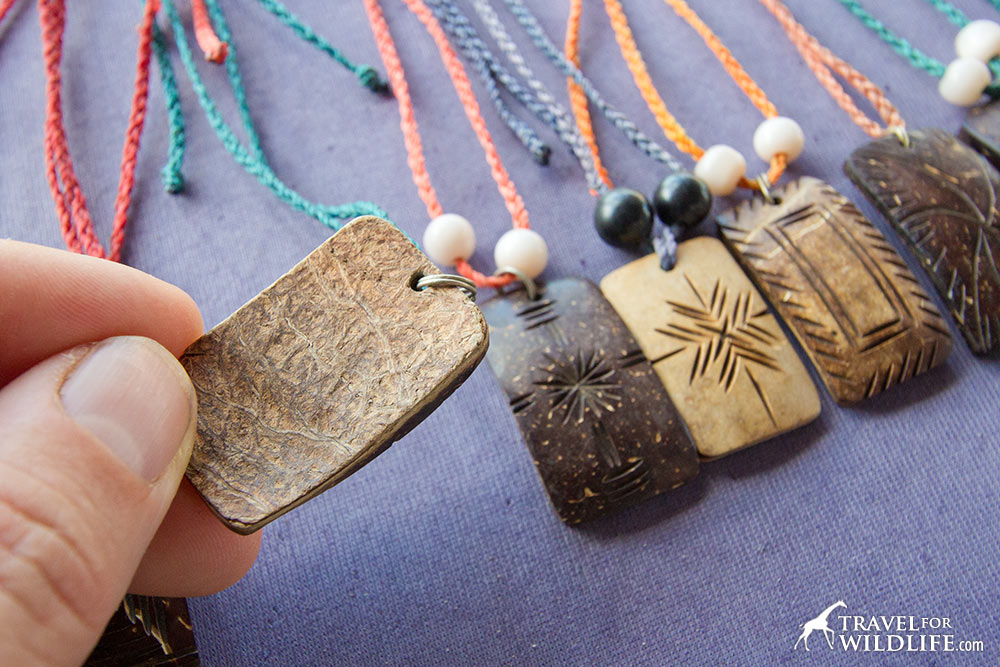
The most common coconut shell souvenirs we saw in Nicaragua were earrings, necklaces, and bracelets.
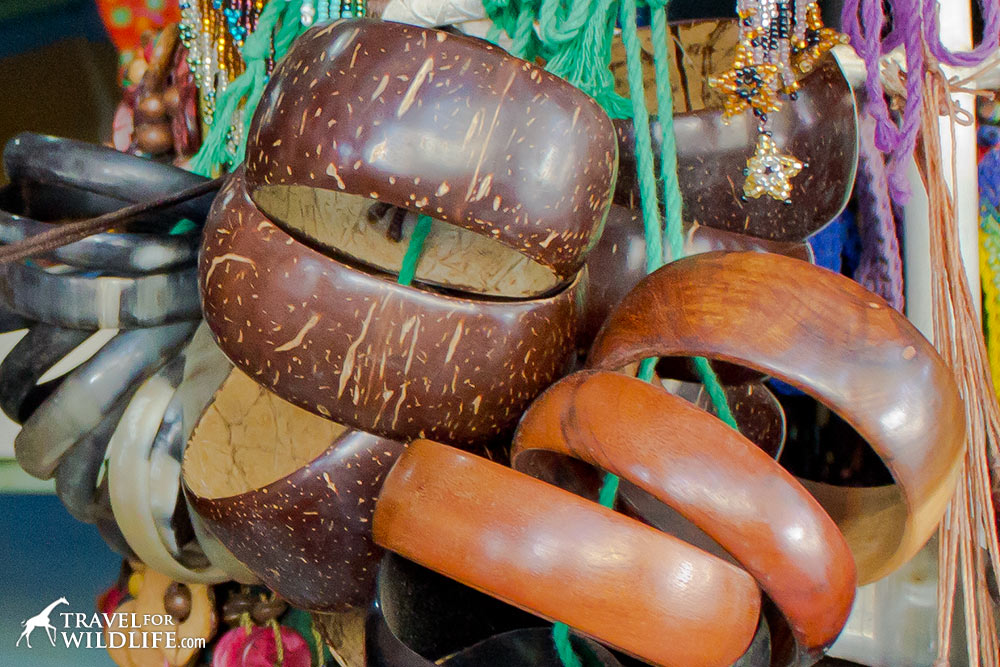
3) Sea Shell
You may also hear a vendor respond that an item is made of “concha” which means “shell” but what they’re referring to is seashell.
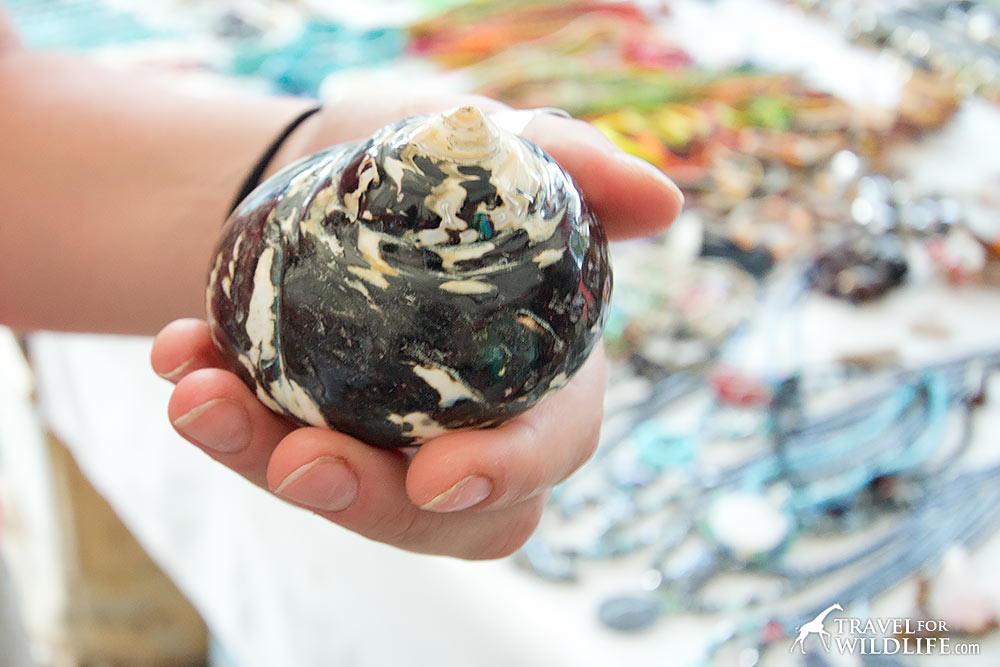
The seashell items commonly seen in Nicaragua have a specific color pattern of white with black spots and are not easily confused with turtle shell.
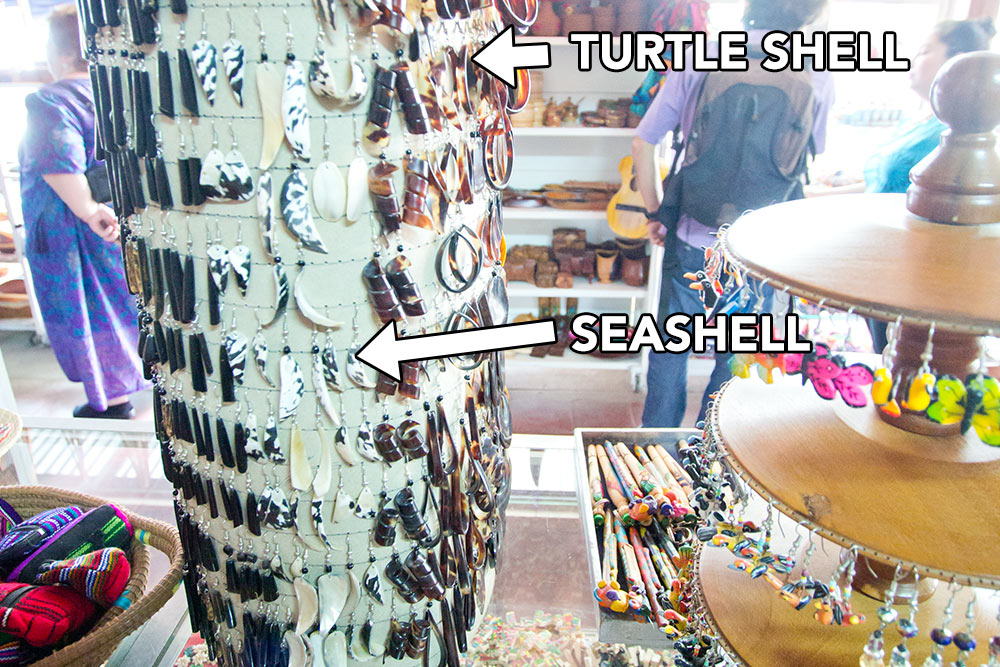
Locally this shell is called “concha nacar”.
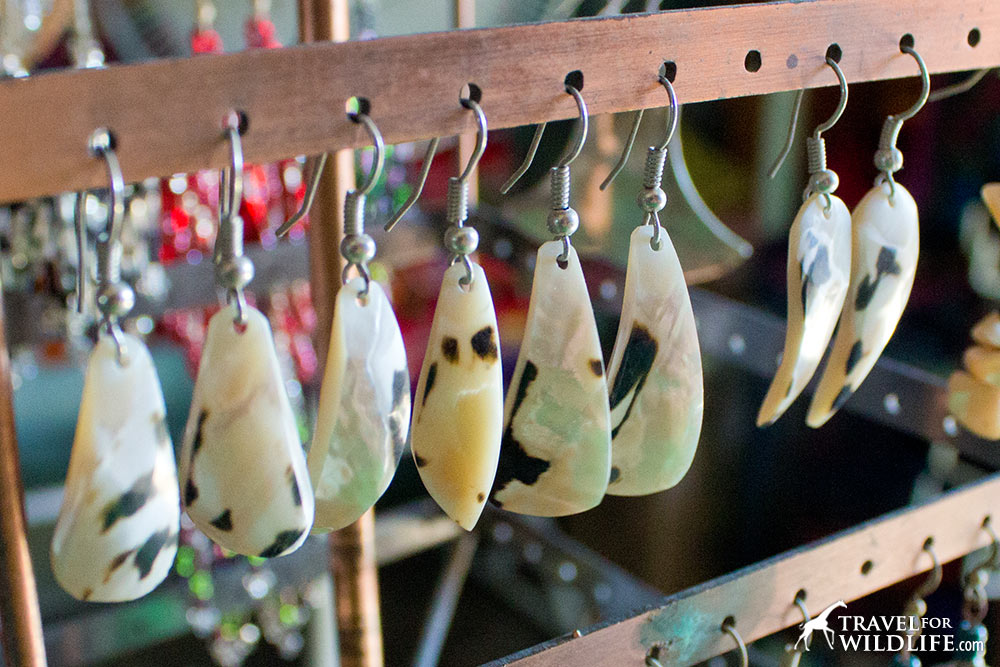
They are very hard and never transparent.
The only seashell souvenirs we saw for sale were earrings and whole shells. We don’t recommend buying items made from seashell because the animals are killed to collect their shells, whether through intentional harvesting or as by-catch in commercial fishing.
4) Plastic
Now you may be asking yourself, how do I know it’s not plastic? Unfortunately, it can be very had to tell good imitation plastic tortoiseshell from real sea turtle shell.
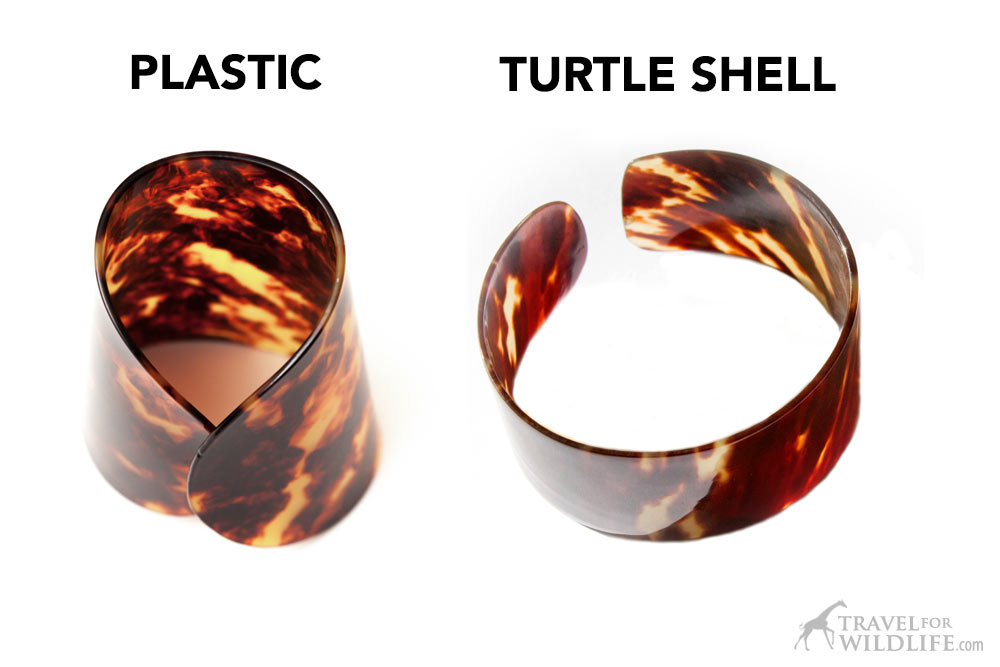
Only one vendor in Nicaragua attempted to tell us that a tortoise shell item was made of plastic. But we can say with confidence that 100% of the tortoise shell souvenirs we saw for sale here were made from actual sea turtle shell. So your best bet is to never buy anything in tropical countries that looks like turtle shell, period.
How To Tell Plastic Tortoiseshell from Real Turtle Shell
Once you learn to recognize the colors and patterns of real sea turtle shell, you may be able to recognize poor imitations made in plastic, especially if the patterns are only printed on the surface. (In real turtle shell, the irregular patterns run all the way through the material) For some examples of this, just run down to your local drugstore and walk down the hair accessories aisle. You’ll find dozens of plastic “tortoiseshell” hair clips and hairbands printed with poor imitations of turtle shell.
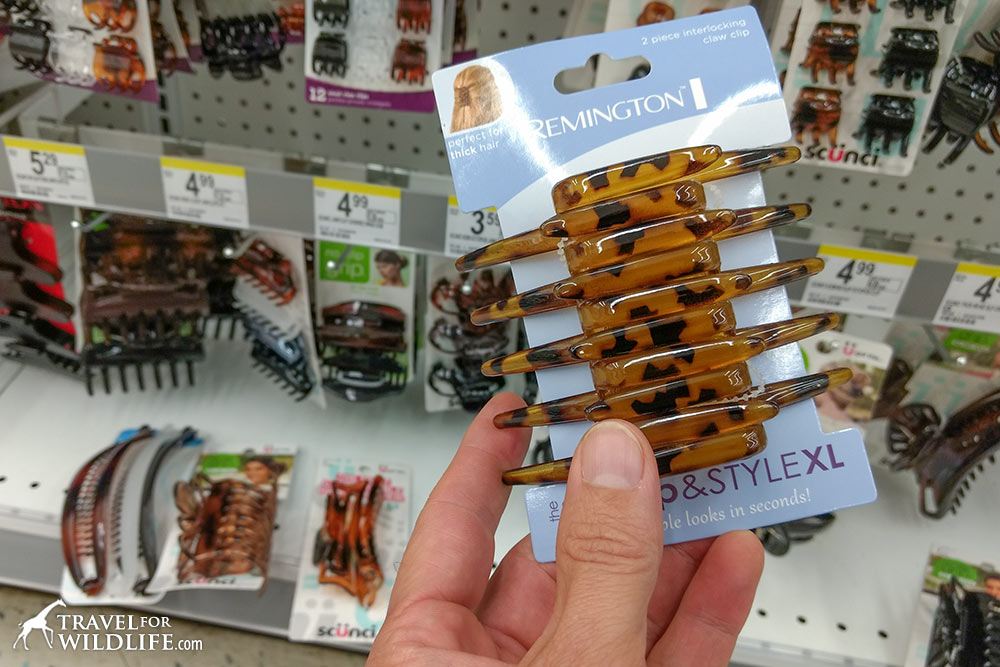
Another way to study fake turtle shell is to do a search for tortoiseshell jewelry on Etsy. Some of it doesn’t look at all like real turtle shell, but some of it is pretty convincing. (Thankfully it is illegal to sell real sea turtle shell pieces on Etsy so this is all “faux” tortoiseshell.) However, if you don’t have much experience with real turtle shell, it can be very difficult to tell a good plastic imitation from the real thing.
The only reliable test we know to determine whether an item is made of sea turtle shell or plastic is to burn it. Burning plastic has an unmistakable disgusting chemically smell (because it is petroleum-based), but sea turtle shell smells only mildly of burning hair because it is made of the same substance called keratin.
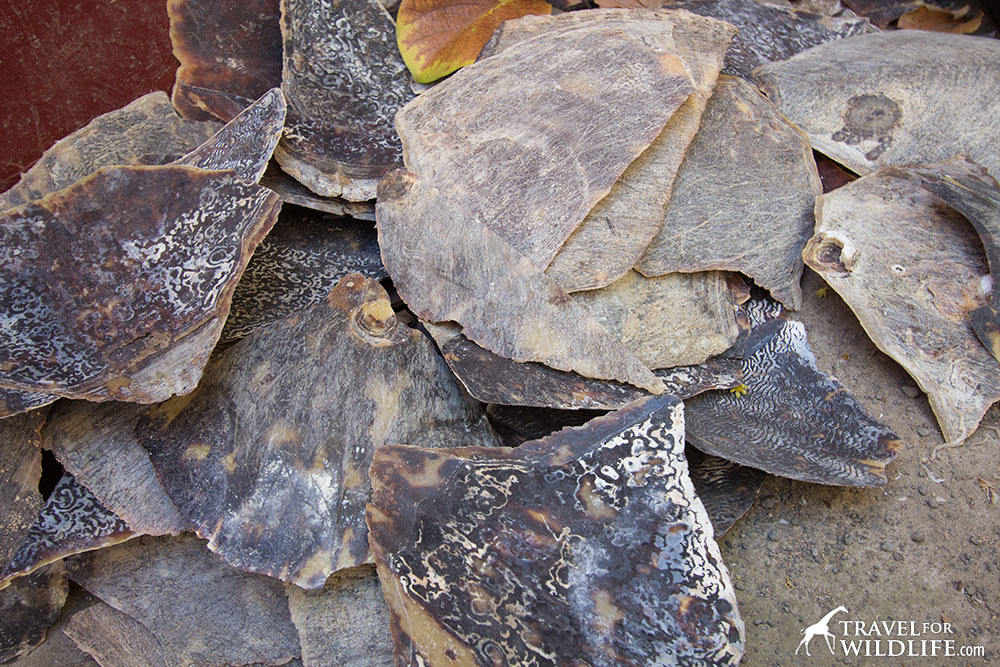
Of course you can’t actually do this test in a market. But one vendor told us that we could bend a sea turtle bracelet as much as we wanted without breaking it, so Cristina tried it and she broke one, which meant we had to buy it. So I had a piece of sea turtle shell that I could try the burn test on.
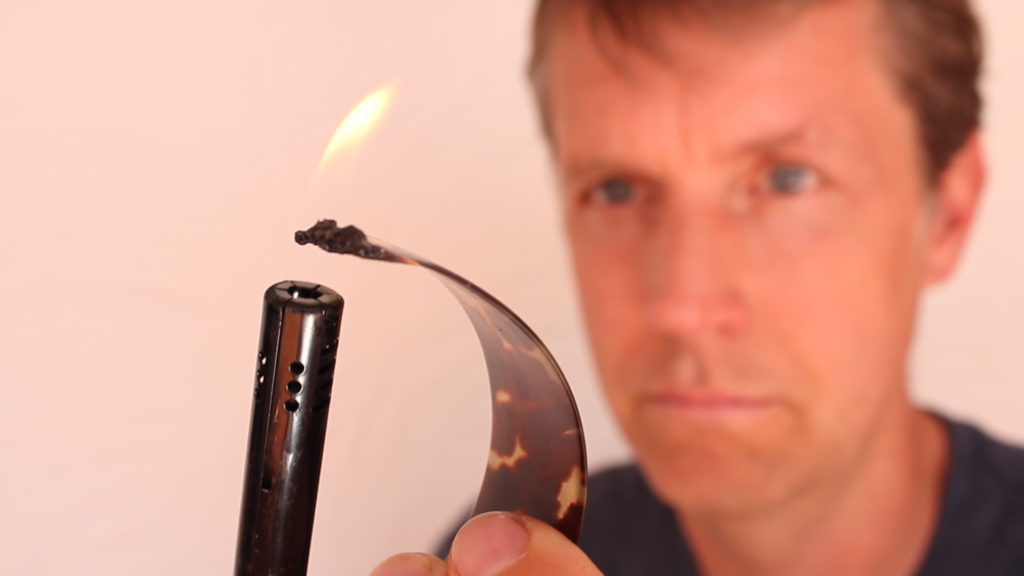
It was definitely not plastic. It burned to a bubbly dark black color and smelled only mildly of burning hair.
Other Products to Avoid & How to Support Local Artisans
If you want to support local artisans, we suggest you choose souvenirs made of coconut shell or horn. Coconut shell is probably the most sustainable of the materials listed above. Other good choices would be souvenirs from recycled materials, wood, metal, stones and minerals, and string. We were told that the cow horn that is used in jewelry items is a by-product of the meat & dairy industry. But if you don’t want to support the use of animal products in souvenirs, then cow horn is out and so is sea shell. The living creatures in sea shells are killed to collect the shell, whether through intentional harvesting or as “by-catch” in the commercial fishing industry. (Check out our Guide to Ethical Shelling for more info.)
Other items to avoid in Central America are black coral and red coral. The depletion of living coral for souvenirs is a serious threat to coral reefs throughout Central America and the Caribbean.
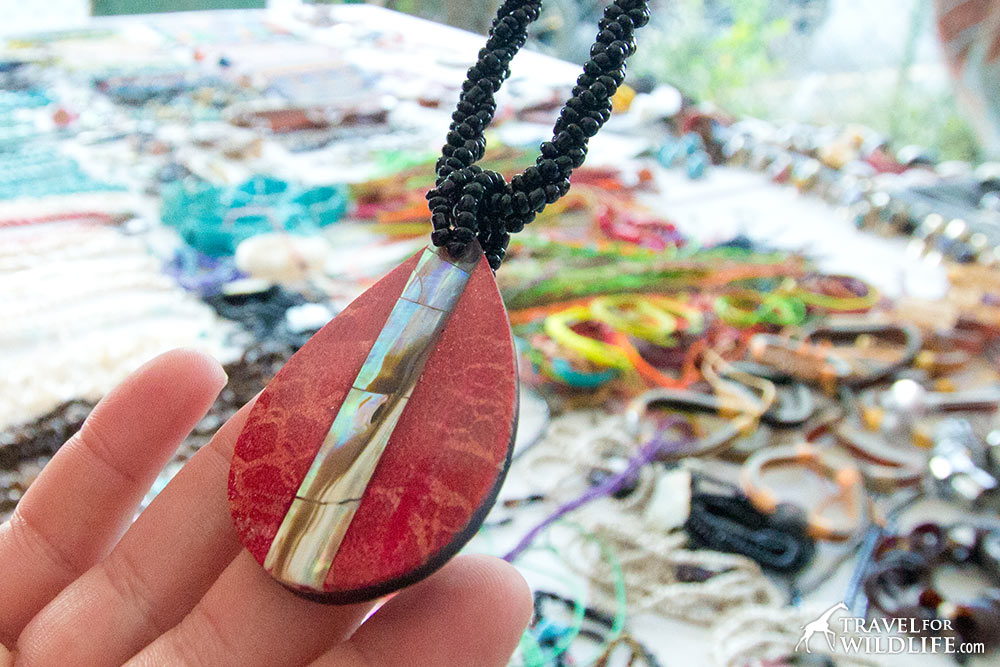
You may also see an array of other souvenirs made from animals including frogs, crocodiles, and other turtle species. Please don’t support this trade of killing animals for the sole purpose of making souvenirs.
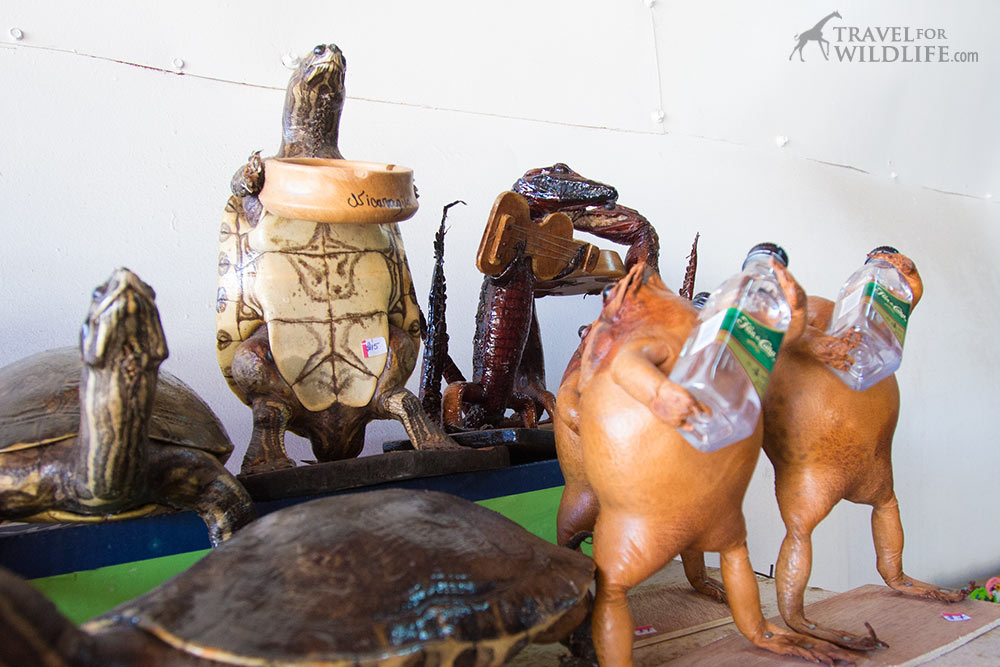
And of course, if you want to help save the beautiful and critically endangered hawksbill sea turtle from extinction, never buy souvenirs made from turtle shell.
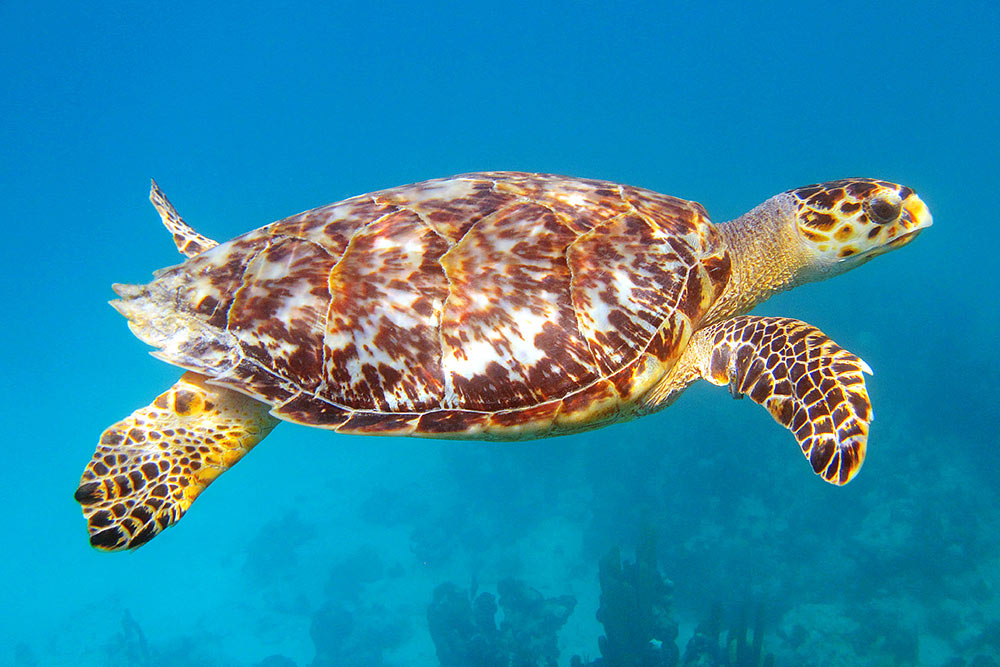
(Thanks to Julie Suess Photography for use of this image)
Ready to Test Your Skills? Take the Quiz!
OK Eagle Eye, now you know how to tell endangered sea turtle shell from other souvenirs. It’s time to test your skills.
1) Check out this photo and see if you can tell which earrings are turtle shell and which ones are coconut shell. When you’re done, scroll down to see the answer.
Good job! Notice the two most common color schemes seen in turtle shell; the darker brown and the lighter reddish-brown, each with transparent amber areas. Bonus points: Did you catch those light tan coconut shell earrings on the left? (the dark brown layer has been carved all the way down.)
ok time for round two.
2) Which of these earrings are turtle shell and which ones are cow horn?
Did you catch it? There is only one pair of cow horn earrings, given away by the fine linear grain that runs through it and the different color tones.
3) OK, see if you can identify all of the materials in this photo…
This photo has cow horn, turtle shell, coconut shell, and wood. You’re getting good at this now right?
4) OK, last test. The following photo shows a display in a souvenir stand in San Juan del Sur, Nicaragua. There are six pairs of turtle shell earrings hiding in here. Can you find them all? (Click the image to open it at a larger size in a new window.)If you found all six items then you are officially a turtle shell expert. Share your new skills with your traveling companions and help spread the word!
If you want to learn more about saving the hawksbill, visit Too Rare To Wear.org and sign the pledge.
Thanks for reading!
Read this next:
Can Tourists Save the Hawksbill Sea Turtle?
Slapped By a Sea Turtle: A Conservation Vacation in Costa Rica
How to Photograph Nesting Sea Turtles, the Ethical Way
Watching Baby Sea Turtle Hatchlings Head Out to Sea in Tulum Mexico
Enjoy this article? Pin it!
Please use one of the three pins below to pin this article in your favorite Pinterest board and spread the word!

Hal Brindley
Brindley is an American conservation biologist, wildlife photographer, filmmaker, writer, and illustrator living in Asheville, NC. He studied black-footed cats in Namibia for his master’s research, has traveled to all seven continents, and loves native plant gardening. See more of his work at Travel for Wildlife, Truly Wild, Our Wild Yard, & Naturalist Studio.

